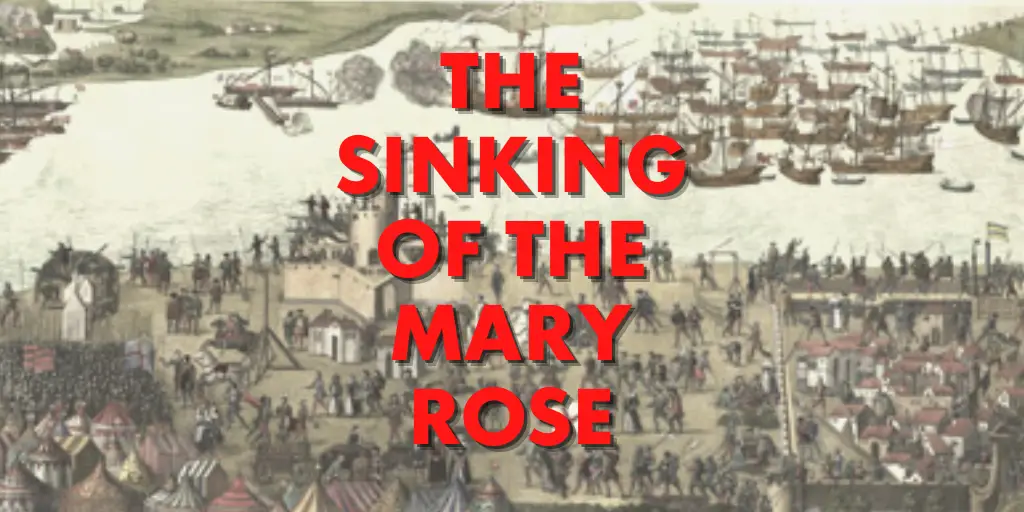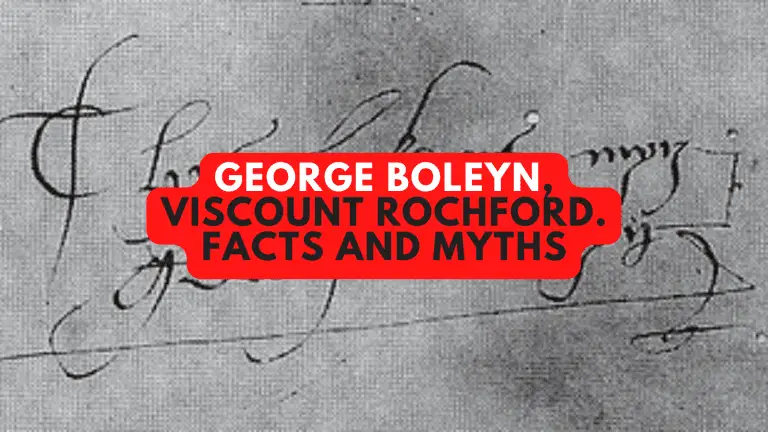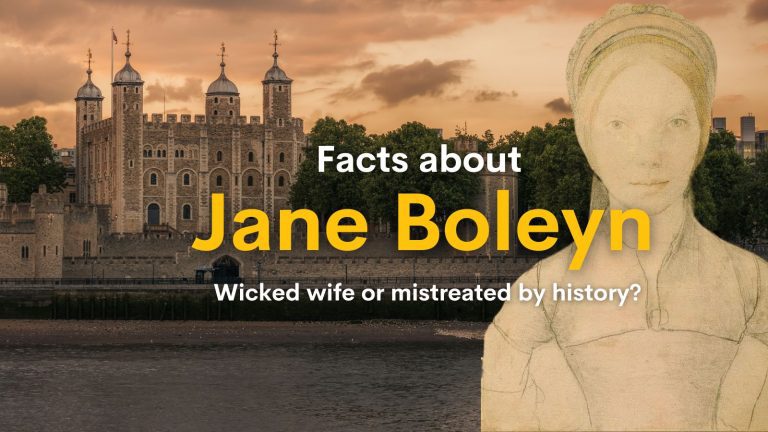The sinking of the Mary Rose
Over 475 years since she sank in the Solent, The Mary Rose remains possibly the most famous ship in England. She was Henry VIII’s favourite vessel and had provided him with a lifetime of service throughout his reign.
It is highly symbolic that Henry himself watched from Southsea Castle as the ship sank beneath the waves. A matter of months later, Henry himself was dead.
[/et_pb_text][/et_pb_column][/et_pb_row][et_pb_row _builder_version=”4.7.7″ _module_preset=”default”][et_pb_column type=”4_4″ _builder_version=”4.7.7″ _module_preset=”default”][et_pb_text _builder_version=”4.7.7″ _module_preset=”default” header_2_text_color=”#7e0f82″]The build-up to the sinking of the Mary Rose
[/et_pb_text][/et_pb_column][/et_pb_row][et_pb_row _builder_version=”4.7.7″ _module_preset=”default”][et_pb_column type=”4_4″ _builder_version=”4.7.7″ _module_preset=”default”][et_pb_text _builder_version=”4.7.7″ _module_preset=”default”]July 1545
Henry VIII was in Portsmouth, inspecting the “Navy Royal” (Yes, it is different from the modern version of Royal Navy)
The pesky French were on the verge of invasion…again. They were rather fed up that Henry had captured the town of Boulogne in 1544. They wanted a spot of good old-fashioned revenge.
Under the command of Claude d’Annebault, they had 200 ships and 30,000 men. This Armada was much bigger than the much better know Spanish Armada some 43 years later.
On the 18th of July, the French fleet entered the Solent and landed some troops on the Isle of Wight. The English navy launched from Portsmouth, and after a minor skirmish, the French turned tail and fled.
Henry VIII dined that evening aboard the carrack, ‘The Great Harry.” Yes, in typical egotistical style, it was named after him, and it was the flagship of the commander of the navy, Admiral John Dudley. Henry was getting on in years and by this stage had put on a considerable amount of weight. He was pulled on board by a team of sailors that had attached ropes to a chair.
The next day, 19th July 1545, dawned bright and clear, and the French were back in the Solent. It was time for the English to see them off.
[/et_pb_text][/et_pb_column][/et_pb_row][et_pb_row _builder_version=”4.7.7″ _module_preset=”default”][et_pb_column type=”4_4″ _builder_version=”4.7.7″ _module_preset=”default”][et_pb_text _builder_version=”4.7.7″ _module_preset=”default” header_2_text_color=”#7e0f82″]The Battle of Solent
[/et_pb_text][/et_pb_column][/et_pb_row][et_pb_row _builder_version=”4.7.7″ _module_preset=”default”][et_pb_column type=”4_4″ _builder_version=”4.7.7″ _module_preset=”default”][et_pb_text _builder_version=”4.7.7″ _module_preset=”default”]The Mary Rose lead the charge by the English.
She sat low in the water as she was heavily armed with additional cannon and packed with sailors and troops.
She made for an impressive sight, huge flags hanging from the mast and her cannon gleaming.
The legend has it that the ship was named after his favourite sister, but no one knows. It could just as easily been named after the Virgin Mary or some young serving wench Henry had his eye on in the maid’s quarters. Anyway… It was the first ship commissioned by him after becoming King. It was now 34 years old. His father had left him the grand total of two warships, and Henry, rather wisely, thought it wasn’t enough and embarked on a vast shipbuilding program. The Mary Rose had given him loyal and distinguished service.
That morning Henry VIII was in Southsea Castle with wife number six, Catherine Parr, watching matters unfold.
The Mary Rose fired its cannon in an intimidating opening salvo. It was turning to present the guns on the other side to the enemy ships.
But the weather in the Solent is unpredictable. A heavy gust took the ship, she heeled, and water gushed into the gun parts that were still open after the first salvo.
The end was quick.
The crew scrambled in desperation for the top decks as the ship lurched in the water. Guns, cannonballs, equipment, and supplies were flung about the ship crushing men attempting to escape.
The ship had been fitted with anti-boarding netting to stop the French from success in their common tactic of boarding ships.
Now it acted as a prison. The majority of the men were trapped by it.
Out of a crew of over 400, only 35 escaped that day.
[/et_pb_text][/et_pb_column][/et_pb_row][et_pb_row _builder_version=”4.7.7″ _module_preset=”default”][et_pb_column type=”4_4″ _builder_version=”4.7.7″ _module_preset=”default”][et_pb_text _builder_version=”4.7.7″ _module_preset=”default” header_2_text_color=”#7e0f82″]The aftermath of the sinking of the Mary Rose
[/et_pb_text][/et_pb_column][/et_pb_row][et_pb_row _builder_version=”4.7.7″ _module_preset=”default”][et_pb_column type=”4_4″ _builder_version=”4.7.7″ _module_preset=”default”][et_pb_text _builder_version=”4.7.7″ _module_preset=”default”]The wind died down almost straight away after the sinking of the Mary Rose, meaning that both fleets basically had little option but to sit staring at each other.
Cutting a long story short, the French were forced to leave as supplies were running low. Their invasion of the Isle of Wight came to nothing, and the forces were taken off the beaches.
Henry was, understandably, a little cross at the loss of his favourite ship. Yet, he believed that he could be raised from the sea bed. Divers were sent down to attach ropes to the masts to try to drag her to the surface. The masts were broken during the attempt. And it wasn’t until 1982 that she was finally raised.
[/et_pb_text][/et_pb_column][/et_pb_row][/et_pb_section]





